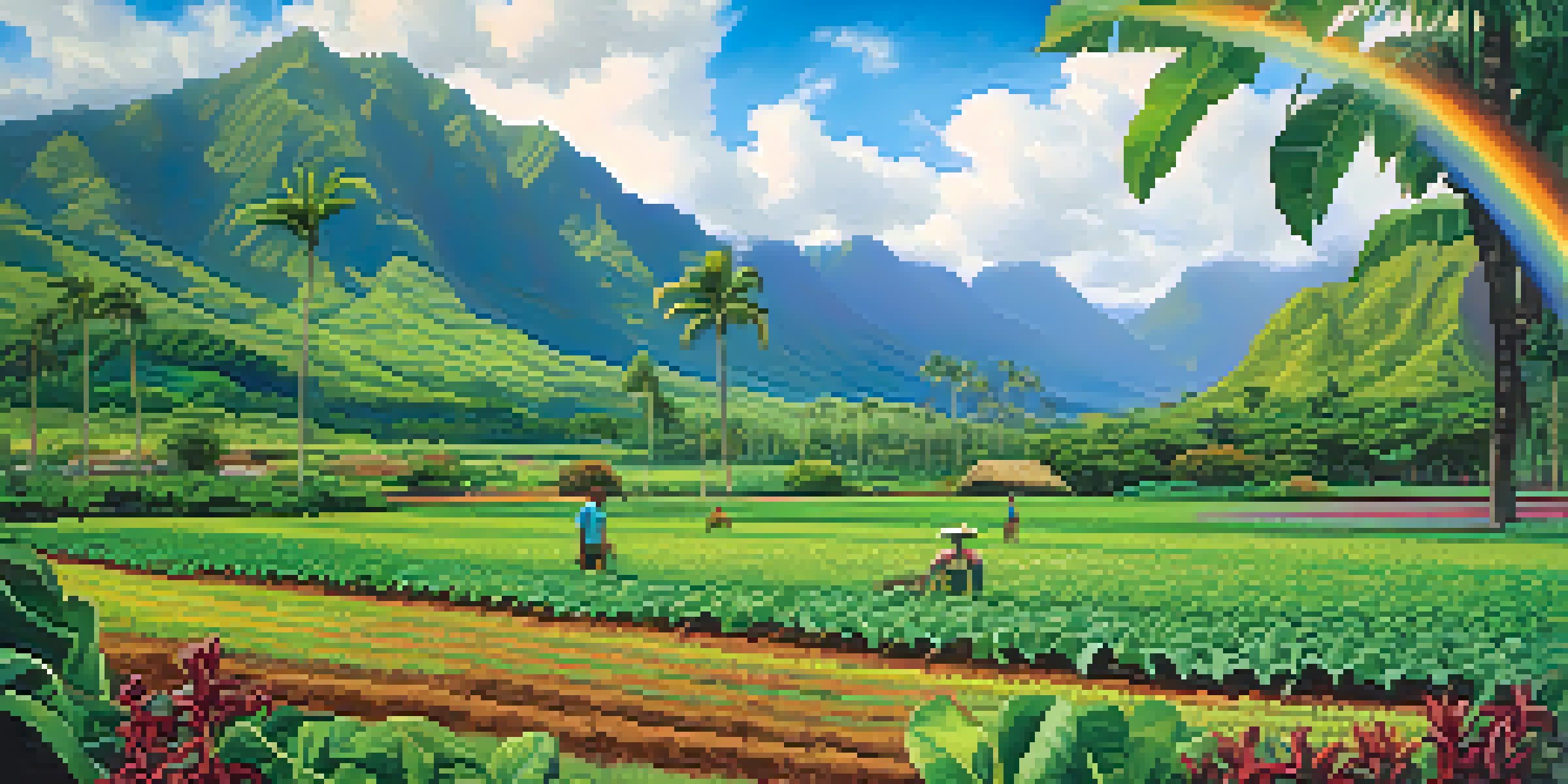Sustainable Agriculture Practices in Hawaii's Economy

Understanding Sustainable Agriculture in Hawaii
Sustainable agriculture refers to farming practices that maintain the health of the environment while producing food. In Hawaii, this approach is especially vital due to its unique ecosystem and limited land resources. By focusing on sustainability, farmers can ensure that they are not only meeting today’s needs but also preserving resources for future generations.
The Role of Native Crops in Sustainable Practices
Hawaii is home to a variety of native crops, such as taro and sweet potatoes, which are crucial to both the culture and economy. These crops are often more resilient to local pests and diseases, making them an excellent choice for sustainable farming. By prioritizing indigenous plants, farmers can reduce their reliance on chemical inputs and promote biodiversity.
Importance of Native Crops
Native crops like taro and sweet potatoes play a vital role in Hawaii's sustainable agriculture by promoting biodiversity and reducing chemical reliance.
Water Conservation Techniques in Hawaii
Water is a precious resource in Hawaii, and sustainable agriculture practices focus on conservation techniques. Farmers are increasingly adopting methods like drip irrigation and rainwater harvesting to minimize water use. These techniques not only conserve water but also improve crop yields, demonstrating that sustainability and productivity can go hand in hand.
Organic Farming: A Growing Trend in Hawaii
Organic farming is gaining momentum in Hawaii, driven by consumer demand for healthier, chemical-free produce. This practice aligns well with sustainable agriculture principles, as it emphasizes soil health and minimizes environmental impact. As more farmers transition to organic methods, they not only contribute to a healthier ecosystem but also tap into a lucrative market.
Water Conservation Techniques
Farmers in Hawaii are adopting water conservation methods such as drip irrigation and rainwater harvesting to enhance sustainability while improving crop yields.
Community Supported Agriculture (CSA) Initiatives
Community Supported Agriculture (CSA) connects local farmers directly with consumers, fostering a sense of community and support. In Hawaii, CSAs allow consumers to purchase fresh produce directly from farmers, ensuring a reliable income stream for agricultural families. This relationship not only sustains local farms but also strengthens the local economy.
Agroforestry: A Dual Approach to Farming
Agroforestry combines agriculture and forestry practices, creating a more diverse and sustainable farming system. In Hawaii, this method helps enhance soil quality and provides habitats for wildlife. By integrating trees into crop production, farmers can improve their yields while contributing positively to the environment.
Economic Benefits of Sustainability
Sustainable agricultural practices not only support local food production but also bolster Hawaii's economy by creating jobs and reducing reliance on imports.
The Economic Impact of Sustainable Practices
Sustainable agriculture practices have a significant positive impact on Hawaii's economy. By promoting local food production, they reduce the need for imported goods, keeping money within the community. Additionally, sustainable practices can create new job opportunities, from farming to processing and distribution.
Challenges and Future of Sustainable Agriculture in Hawaii
Despite the benefits, sustainable agriculture in Hawaii faces challenges such as climate change and land use conflicts. Farmers must navigate these hurdles while continuing to innovate and adapt. Looking ahead, collaboration between farmers, government, and community organizations will be crucial in promoting sustainable practices that can thrive in Hawaii’s unique environment.